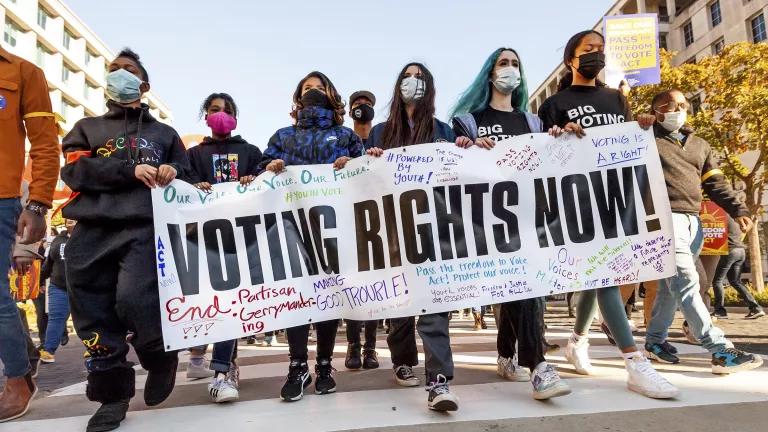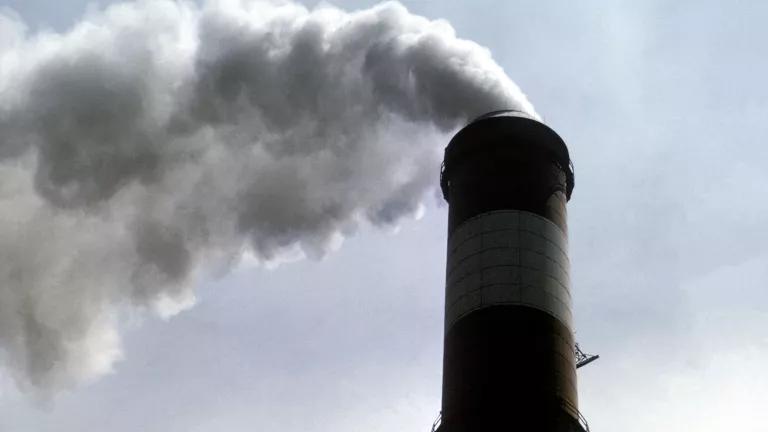Radical Optimism on Climate: The IPCC Report on 1.5 degrees

Climate change creates the risk of grave and frightening impacts on our well-being, according to a new report issued by the Intergovernmental Panel on Climate Change (IPCC). But the report offers reasons for hope—indeed, reasons for radical optimism—if you read it carefully. We know how to solve this problem, the IPCC explains, and the report tells us how in its language and energy system modeling.
The IPCC report focuses on futures that limit climate change to 1.5 degrees C above pre-industrial levels, which is the more ambitious goal accepted by over 190 countries in the Paris Agreement of 2015. The optimistic part of this comprehensive study is the statement that “1.5°C-consistent pathways can be identified under a range of assumptions about economic growth, technology developments and lifestyles.”
In other words, we know we can do it, and the IPCC offers not just one pathway to limiting the damage from climate change, but a variety of feasible pathways.
Efficiency is the cornerstone of all the pathways that achieve the goal: “Demand-side measures are key elements of 1.5°C-consistent pathways,” says the Technical Summary.
The dominant role of efficiency is not a new conclusion: the International Energy Agency’s analyses have shown consistently over the years that efficiency is the number-one solution to the climate problem in terms of its greater size and in terms of its lower cost than any other option, as has NRDC’s own work. NRDC’s most recent Sixth Annual Energy Report also highlights efficiency’s role.
What we in the American efficiency advocacy community call “efficiency” is divided into several buckets in the IPCC report—including location efficiency (design of cities and transportation systems to allow much lower reliance on cars) and electrification and other forms of substituting zero-emissions or lower emissions fuels for more damaging ones. In addition, the report recommends measures that our community usually calls “conservation”, namely behavioral changes that save energy.
The report is one of the first to emphasize the importance of reducing emissions quickly, since climate pollution is cumulative. Efficiency is by far the best way of doing this, because new supply-side resources have longer lead times. Thus retrofits of existing buildings loom larger in 1.5 degree scenarios than in other reports with less ambitious goals.
Current national and regional plans for limiting climate pollution fall short of the 1.5-degree goal. But this fact shouldn’t be surprising, because the goal was hardly even discussed until less than three years ago. Instead, it should inspire and challenge us to assure that our actions are more ambitious than we had planned on before now.
Limiting climate change will require transformative systematic change in the world’s energy system, and the report has been characterized as saying that the scale and speed of this transformation has never been seen before.
But the language in the report is much more temperate:
The speed and scale of transitions and of technological change required to limit warming to 1.5°C has been observed in the past within specific sectors and technologies. But the geographical and economic scales at which the required rates of change in the energy, land, urban, infrastructure and industrial systems would need to take place, are larger and have no documented historic precedent (limited evidence, medium agreement).
It is critical to note the last caveat, because the statement that we have never done this before (again, based on limited evidence) appears to be wrong. We HAVE done this before, at least in several large countries including the United States. It was done in a special context: preparation for war. Starting on December 8, 1941, the U.S. went from having a small military unprepared to fight a war to the largest military in world history, and it did it by converting an overwhelming part of its industrial production from civilian, market-focused production such as cars and appliances to military production, such as tanks, aircraft, and weapons. It did so by effectively nationalizing its major industries.
Other countries, at various points in recent history, did the same, and our country did the same in 1861 and 1917.
An effective response to climate change is much less disruptive than preparation for war. But the comparison is apt, because the key factor that would allow a serious response to the threat of climate change is the political will to solve the problem.
Unlike preparing for war, which involved the disruption of major industries, the displacement of millions of workers, and the sacrifices involved with rationing consumer products, solving climate change helps people. It improves our health, makes our buildings more comfortable, it reduces our costs for utilities and transportation while providing more choice and less traffic congestion, and it reduces the divide between rich and poor. It reduces displacement of people by creating millions of new jobs where people already live.
As the IPCC notes: “Limiting global warming to 1.5°C rather than 2°C would make it markedly easier to achieve many aspects of sustainable development, with greater potential to eradicate poverty and reduce inequalities (medium evidence, high agreement).” Efficiency is the critical component of this finding, as other emissions reductions technologies do not preferentially help poorer communities and individuals.
The IPCC report is encouraging enough about the possibilities for solution, especially about efficiency, but the reality is even better. My research has shown how the models used in reports such as the IPCC’s are afflicted with 11 systematic biases that undercount the effectiveness of energy efficiency. Even with the undercount, efficiency is the largest contributor to cutting climate pollution. Thus properly crediting its true potential makes a real difference.
Many of these biases are noted in the IPCC text, but they do not appear to be incorporated into the models the report relies upon. They include:
- a focus on individual energy uses, rather than looking at system performance. Thus the building energy consumption scenario fails to account for the rapidly increasing number of Zero Energy buildings—structures that produce as much energy as they consume.
- a failure to look at continual improvement. Thus the efficiency technologies available in 2030 and 2040 are assumed to be no better than what we understand today.
- underestimating savings from behavioral change, such as better operation and maintenance. Savings increases of 4 percent annually—that is, 4 percent the first year, 8+ percent the second year…—have been sustained in a number of industrial plants and buildings for long periods of time.
In addition, the savings from urban design that minimizes overall travel, not merely diverting travel from emissions-intensive modes like cars to more efficient modes like rail, but reducing the need to travel altogether, do not have the research basis globally to justify the level of savings that appear possible based on extensive U.S.-based research. This weakness is especially important in countries such as India that have yet to build the infrastructure that will accommodate future middle-class families and have the chance to do so in a way that greatly reduces the otherwise-expected growth of automobile travel.
So even the IPCC’s optimism understates what is possible if we really try hard.
Why is this radical optimism justified? My first foray into creating scenarios for how we could reduce the need for polluting power through energy efficiency was at the very beginning of my career, when California was looking at the need for 17 GW of new electric power (the equivalent of 17 large nuclear power plants) over the next 10 years. I developed a scenario in which the analysis showed that all 17 GW could be avoided.
This was such a surprising result that we had some internal debate over whether to even present the conclusion as calculated rather than “compromise” on saying that only half of the power plants were needed. But we ended up saying that we have to go with what the models tell us.
This was a long time ago, so we know how it turned out. None of the 17 power plants was constructed, and at the end of the decade there was a surplus of electricity, not a shortage. And the reduction in growth of electricity use in California continued (no increase in per household consumption for the next 45 years and counting).
Why is radical optimism important? A moment ago I used the metaphor of preparing for war. This metaphor illustrates the importance of confidence in obtaining political will. One of the lessons of 20th century warfare is the effectiveness of psychological warfare: if one side convinces the citizens of its enemy that they are losing, they will not be inclined to fight. Belief that one cannot succeed leads to unnecessary failure.
In the case of climate, if we believe that disastrous climate change is inevitable, we will not work to make the transformative changes in policy that we need.
Our reaction to the need the IPCC identifies for strong policy action must be to insist that our governments and industries and nonprofits do more. This report validates the optimism that I and others have expressed that we can limit the damage from climate disruption, while also creating jobs and a more equitable world.


